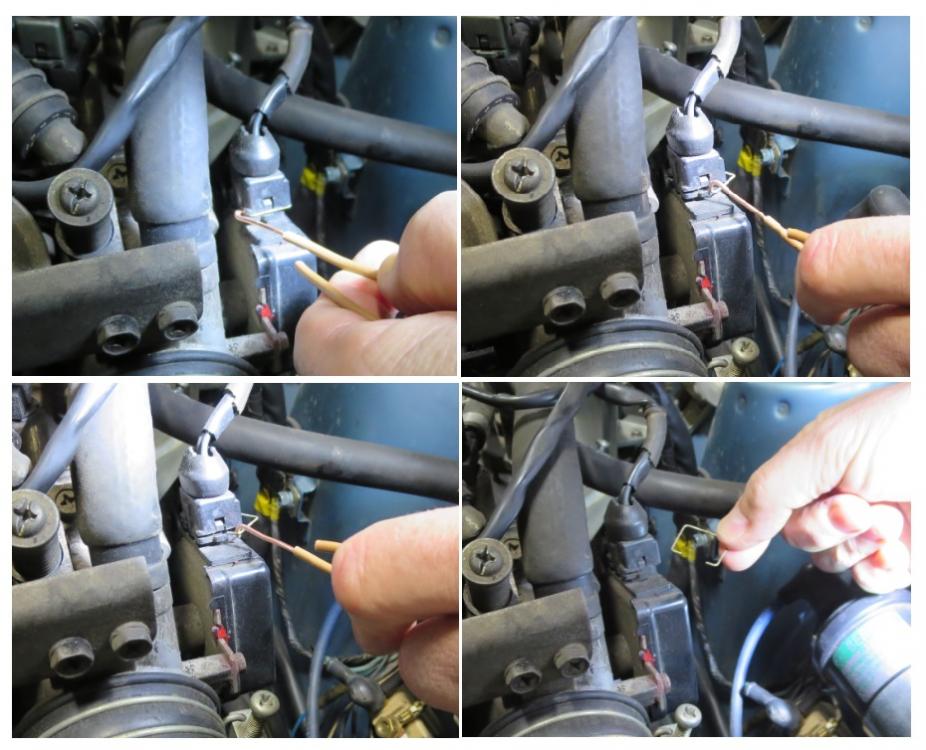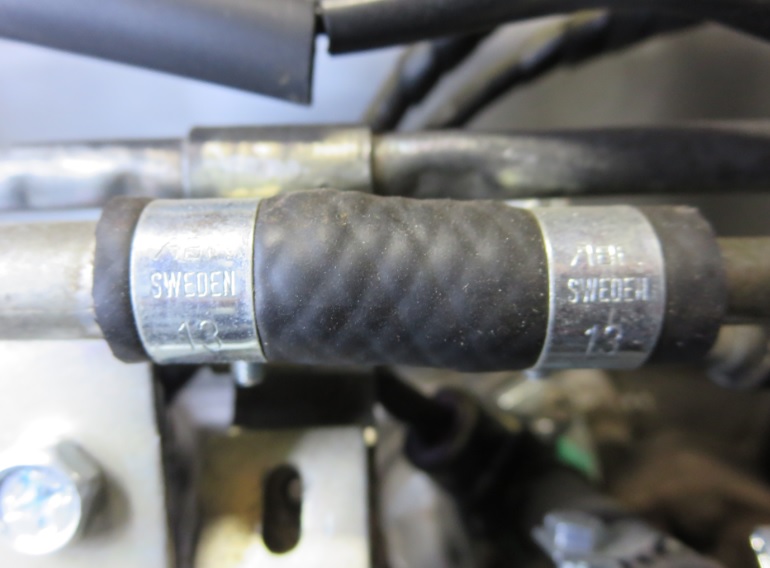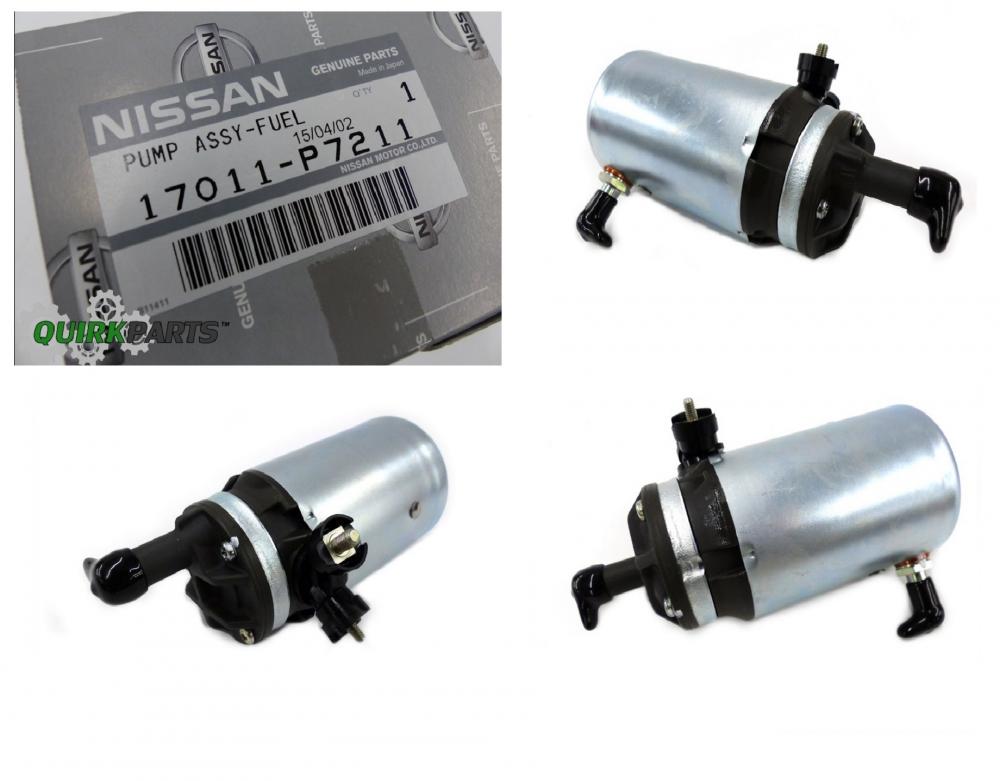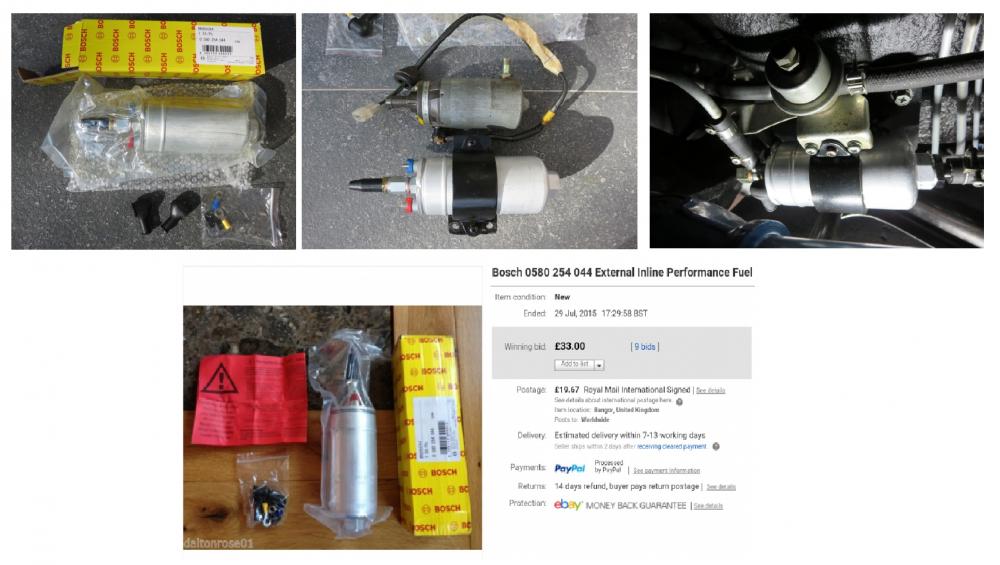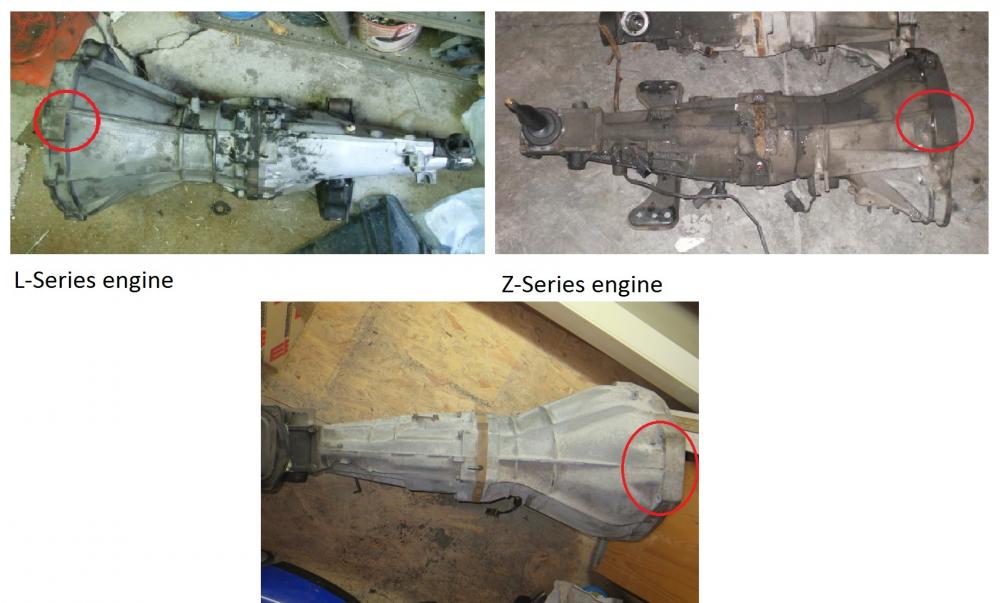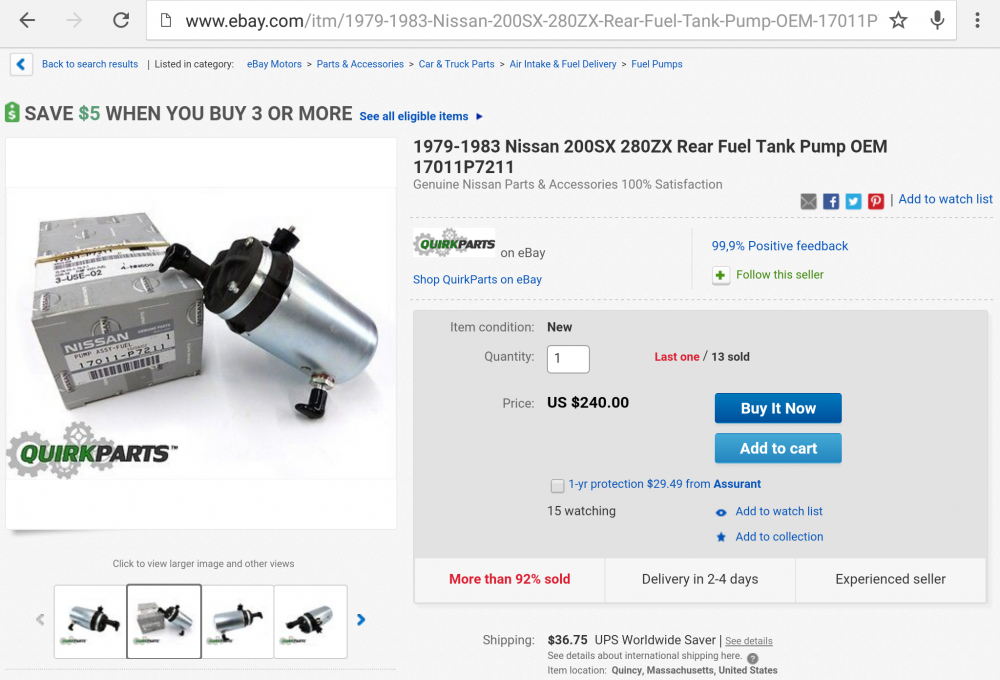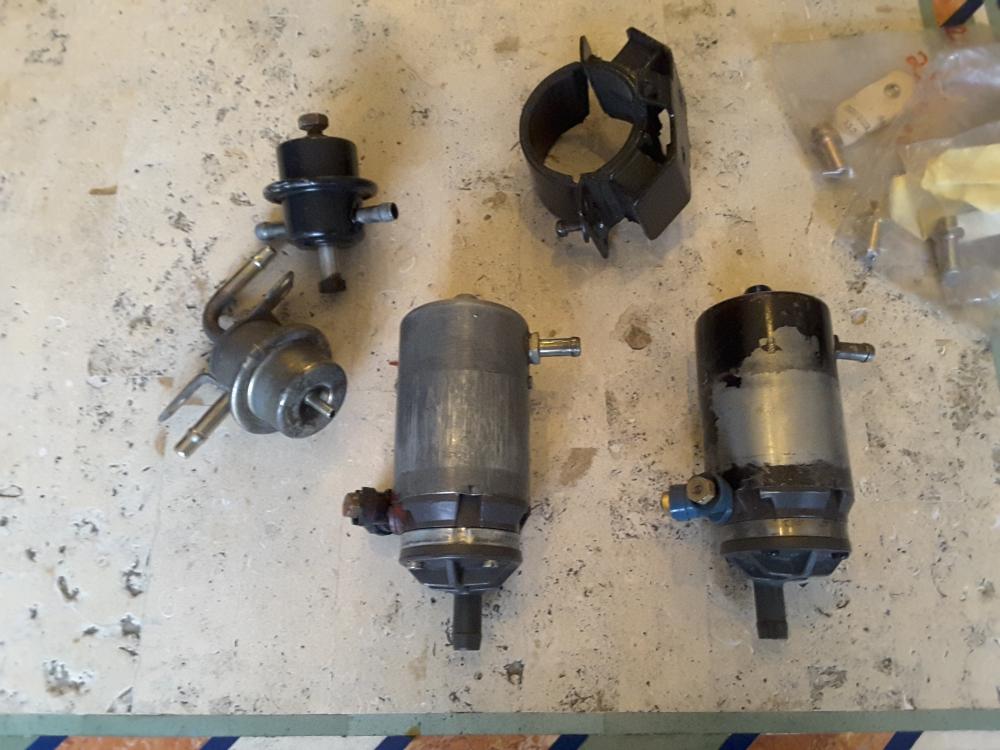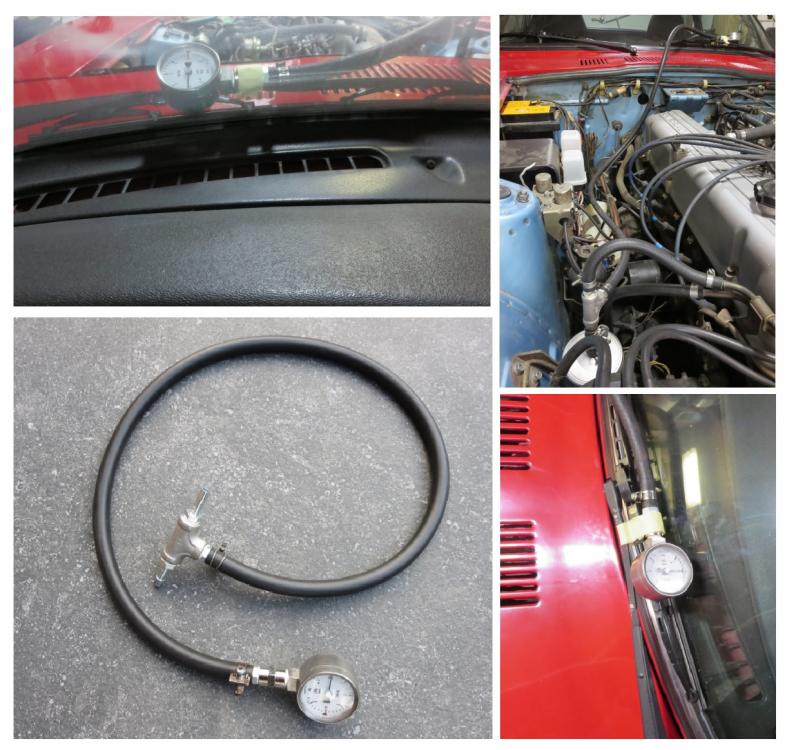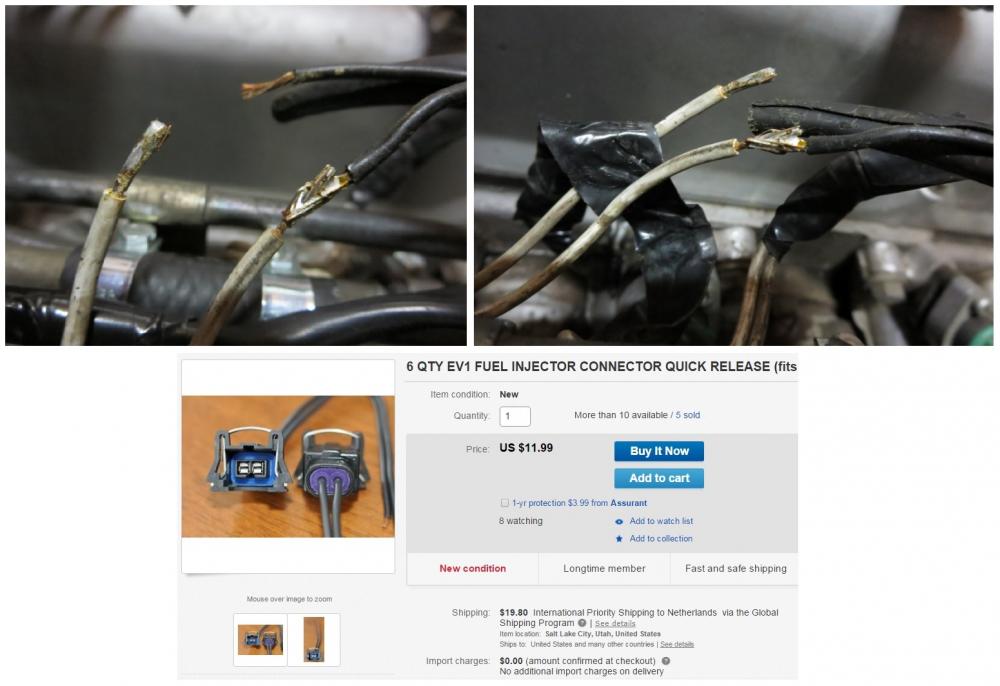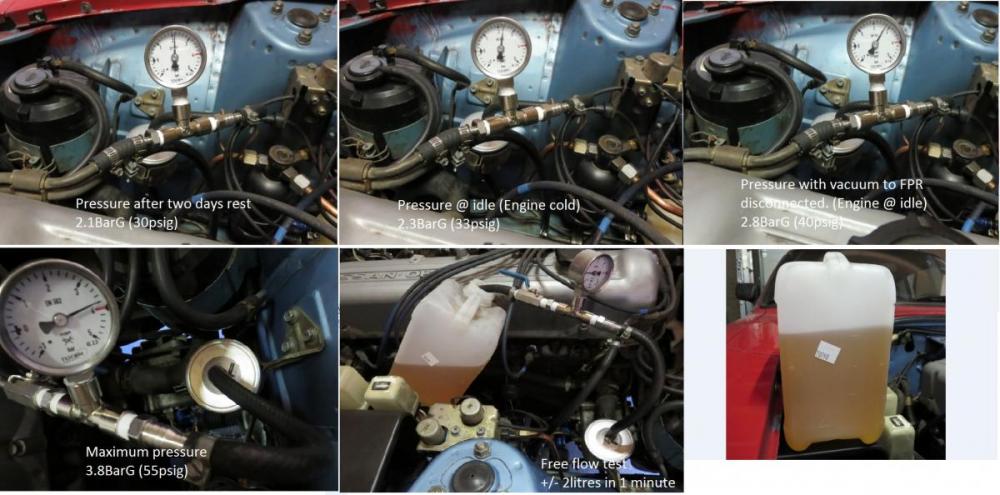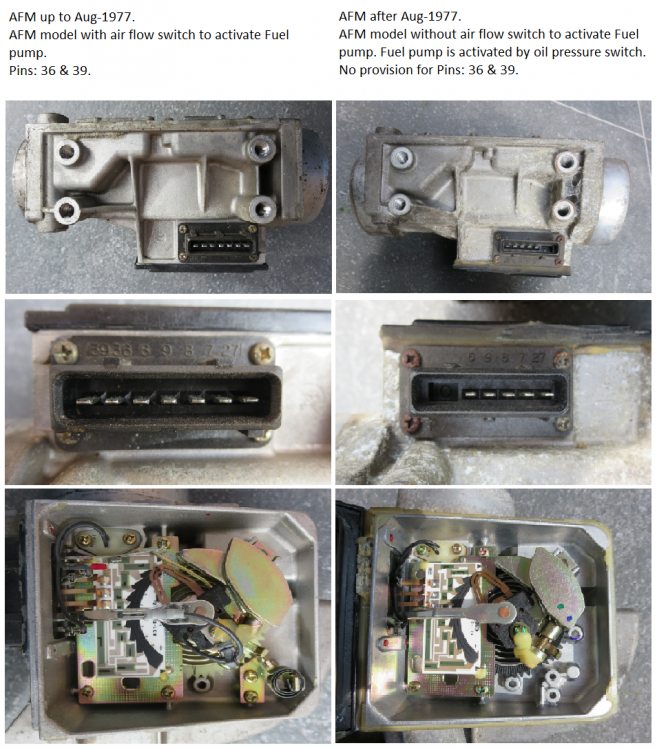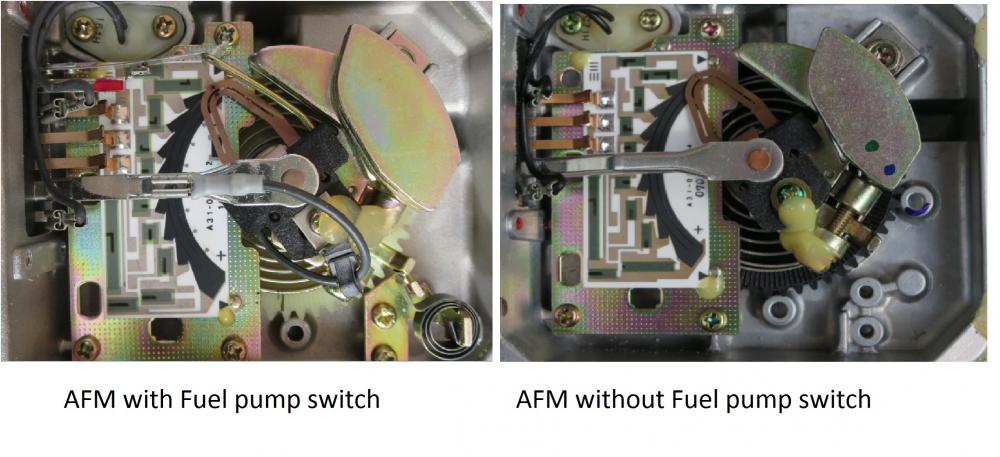Everything posted by EuroDat
-
New owner of '77 280z from Upstate SC
1. I used 8MM fuel hose which is 5/16" imperial. Make sure its suitable for high pressure (at least 100psi) fuel injection systems. 2. The PO replaced my clamps with worm clamps. Bad choice, they cut into the hose and make a mess of it. I ended up with after market "like" OEM size 13mm. See last photo. 3. Straighten a paperclip of something similar and make a hook to get behind the end of the clip. Them you can pull it out. See second photo. 4. The early type FPR is inline with the rail. Its almost impossible to fit without removing the rail. I couldn't get it in anyway. There is only 2-3 mm room betwwen the end of the rail tube and the FPR. The later type only has one inlet and is not inline so you can dismantle it easier. See first photo 5. See siteunseens post. 6. If you complete all the tests, you will know if the injectors are leaking and then you should remove the plugs and turn it over to clear the excess fuel. I lifted my injectors with the rail to see which injectors were leaking and do a VERY simple run test by cranking the starter motor to see which ones were blocked. See last photo.
-
New owner of '77 280z from Upstate SC
Wow, at least the tree didn't fall on the house, car or someone. Sounds like your pump is in good condition. Getting the FPR out on an early 280Z is a pita. I lifted my injectors the check the flow and then it was easy to remove the fpr. I wanted to replace the hoses. I think that is one of the reasons for changing the design of the fuel rail and the FPR in the later models. You can clamp the return line from the FPR shut and run the pump until presure builds up. If it leaks down than its your injectors or CSV since you now know the pump check valve and FPR diaphragm are good. Its looking more like the FPR is your problem.
-
Identifying 5 Speeds.1)
I think the 71C was available in the D21 with the KA engins until 97 when Nissan changed to the D22 Frontier. They may have kept th 71C longer in the Mexico plant. I have seen one out of a 2WD and it has more sensors for the management system, all removable of course.
-
1976 280Z Restoration Project
I don't think Wheee will mind to much. Im amazed that Rockauto so expansive is for an original fuel pump. RockAuto is normally very competative with pricing. There is a nissan dealer on ebay with NOS units for $249. Manufacturing date on the box is April 2002. That is about where Bosch stopped making them. If you were to go with the original style, go with the Nissan NOS pump. Its a Bosch and from all the pumps I have seem the bosch version seems to wear less and perform better. http://www.nissanpartsdeal.com/parts/nissan-fuel-pump~17011-p7211.html http://www.ebay.com/itm/280Z-FUEL-PUMP-OEM-GENUINE-NISSAN-1975-1978-/331780616477?hash=item4d3faa711d:m:mP3RS9OVuY8fOIguL5bsLpQ&vxp=mtr I went with the alternative Bosch pump. Thats the one Bosch suggests as a replacement since my good performing original Bosch pump was leaking at the house o-ring. I don't know the Delphi unit except its more expensive than the bosch replacement I bought so I would go with the bosch unit. I would do a little more testing before buying a new pump. It could be a number of things causing low pressure/flow problem. You could buy a new pump and find the inlet filter was so full of gunt that a perfectly healthy pump was not getting any fuel.
-
Identifying 5 Speeds.1)
You mentioned it was a 71B so I assumed it was the Z series early 83 200SX. They changed late in that year to the CA series engines with the 71C. You have and early 71C if its original and no one has played with any of the combinations yet. That stamp on the transmission housing 71B-1 seems to be just a production casting stamp. The 71C is a nightmare compared to the 71B. It was used in a lot of vehicles for a long time. I think the last version was used in 1998 and doesn't look much like the original. The KA series engine was the last variation with the 71C. The ridge looks similar to the Z, but the bolt pattern is different iirc.
-
Identifying 5 Speeds.1)
The 83 had the Z series engines. The bell housing will bolt up to the L-engine, but the tranny will lean to the passenger side. The easiest way to identify which bell housing it is: Look at the ridge going up the centre of the bell housing. Looking from the transmission towards the engine. If the ridge is close to the right bolt hole its a Z-series bell housing. If the ridge is close to the left bolt hole its a L-series bell housing. In the middle between the top two bolt holes its a VG-series V6 bell housing. Both the Z and VG bell housings will need to be changed. It seems like a lot of trouble just to get a FS5W71B transmission in a Zed. Something that is a fairly common feature in the 280Z. You won't need to modify the bell housing like the 71C, but still I think I would look for a 280Z or ZX. If you don't wont a close ratio gearbox (in front of the 3.36 diff) go for the 280Z or a 280ZX 2+2. The wide ratio Zed tranny is similar to the 200SX. Thats probably why you haven't seen it done yet.
-
1976 280Z Restoration Project
If you google those numbers you won't find much these days. A couple of ebay vendors still have some under the 280ZX nisan pn.17011-P7211. Funny thing is the photo's show a bosch pump in a nissan box. From what info I can find JECS stopped making them becauee demand was two low, but bosch made them for a couple of years longer because the L-Jetronic used them on all kinds of european cars in the seventies. Bosch now quotes the 0 580 254 044 as a replacement.
- 1976 280Z Restoration Project
- 1976 280Z Restoration Project
-
New owner of '77 280z from Upstate SC
I changed my connectors on all the injectors, CSV etc with new quick release connectors. The previous owner did a rough job soldering the connectors he used. They were giving me interminttent missfiring on a couple of cylinders. If you are testing the fuel pressure on your own, you can use a longer section of hose and mount the gauge were you see it. I did that to check the pressure while I was driving it. Simply taped it to the wiper arm and test drove with the bonnet adjusted so it wouldn't pinch the hose. I made an instruction for testing the pump last year when I was playing with my spare pumps. I was almost done, but never got round to finishing it, so it will have some misstakes. See pdf. It might be some help. Instruction - Fuel Pressure Test 280Z RevA.pdf
-
1976 280Z Restoration Project
Interesting. Apart from visual there are some structual differences behind the valance panel. Keeping in mind the frame was altered for the extra stress of the 5mph bumpers and support for the bumper shocks. I have read one or two threads with people talking about it, but they never reported back doing it. If you are dealing with rust issues then the 240Z valance could be a good option. If you have the early model like Mark then you also have more holes to fill not just the two bumper shock holes which good make the change more interesting. I just welded plates in the bumper shock holes. One clear difference is the mounting point holes with M10 threads in the frame for the bumper brackets. The bumper mount holes are in the horizontal position on the 240Z and on the early 280Z both sides are diagonal and the later 280Z the left mount is diagonal and the right side in a wierd vertical position.
-
New owner of '77 280z from Upstate SC
You don't need to run lines from the fuel pump to test its performace. Try doing a free flow test after the filter first. If the pump is in any condition, you should get 2 to 3 litres per minute. After testing the flow pinch the hose shut with vice grips and two pieces of flat metal to prevent the vice grips from damging the hose. I have even used two euro coins to do the job. It should hit 55 to 60 psi before the internal valve in the pump starts regulating the pressure. Remove the small spade terminal from the starter solenoid so you can use the key in start position the activate the pump. I have some photo's of a test I did on mine. I used a small valve to block mine, but vice grips will do fine if the hose is in good condition and flexible. Once you determine you have flow and pressure, you can move on. Keep ticking things off the list and you will get there.
-
Source for OEM electrical connectors
Check the number of pins carefully when you buy these conectors for the AFM or ask the E-bayer to quote the numbrr of pins. A lot of the ones I came across are the 6-pin version like the 300ZX (N62) MAF sensor or the 5-pin version on the Bosch AFM 0 280 202 066 http://www.tav-autoverwertung.de/shop/Air-flow-meter-Bosch-0-280-202-066-1-705-7219-13-62-1-705-721-BMW-E30-325e-E28-525e I picked one up from the internet. The type with a quick release spring that you can sqeeze to release the connector. A lot less fiddling the get the connector off with it under the AFM.
-
New owner of '77 280z from Upstate SC
What you are experiencing is normal. We have all sort of been through it. My 280 was parked under a house in the owners workshop since 1993 and I own it since 2011. I have had blocked injectors where the PO adjustd the AFM to compensate, a TIU that played up awfully when the engine warmed up and after market injector connectors where the wires were badly soldered and intermittently causing and open circuit. It sounds bad, but that was over a two year period. If you keep working through the system, you will find more problems, fix the problems and eventually it will become a reliable car. I wrote a quick guide on Redwings thread on checking the fuel system for leaks. Ill can post my full step by step test with photo's tomorrow if you want it. My post is on the first page about half way down.
-
280Z differences (Timeline)
Here are the two different style AFM's. The main difference is the Fuel pump switch. There are some other small differences in the AFM body like extra webbing on the outside, but I don't think that make any significant difference in functionality. Models with switch: 22680-N4202SV - up to july 75 22680-N4210 - Aug-75 to Jul-76 22680-N4800 - Aug-76 to Jul-77 Models without switch: FED: 22680-N4211 From Aug-78 CAL: 22680-N4801 From Aug-78 280ZX 22680-P6600 I don't know what the difference is between the two FED and CAL models. Unfortunatly the models before Aug-77 don't have the Nissan part numbers on the AFM. The stickers come from JECS and will have a number similar to this: Type: A31-625-000 Serial nr.: 1X21 Engine size: L28 Somewhere after Aug-77 they started using the Nissan part numbers as well on the stickers.
-
1976 280Z Restoration Project
A: Its the lower grill centre support above the centre valance panel and two horn mounting brackets for the pre August 76 280Z. Or B: None of the above. I posted some photos of the differences between the pre Aug 76 and the later style brackets here Its about post 18 I think. The posts don't have numbers anymore.
-
1976 280Z Restoration Project
The Bosch pumps seem to be a bit beter for wear than the Hitachi model. Its hard to tell them apart. They look the same, but they are NOT. I have three, two hitachi's and one bosch. Both hitachi's show signs of wear and one out was out of a 280zx with 76,000 km. The bosch has almost 180,000km but in remarkably good condition except for a leaking o-ring around the housing. Still trying to gather the courage to pry it open and change the o-ring. The motor section is none servicable. If you do dismantle the pump, pay particular attention to the position and direction of the centre disc. The hole in the centre for the pump is offset about 2mm iirc. Changing position or flipping it over will effect performance.
-
My Datsun 240Z
Sounds like someone drove it with the handbrake on. Its common with automatics and easy to forget when the handbrake doesn't have a warning buzzer.
-
My Datsun 240Z
Lucky its only litle things. In your capable hands it will be quickly behind you and you wil be on the road. My rear brakes had 18% difference from left to right when I first went in for inspection. After deglazing the drums, new wheel cylinders and porterfield shoes it was 3% and 2% on the two test runs he did. He said that was great for drums.
- 78&79 Z
-
MASTER VAC BRAKE BOOSTER AND MASTER CYLINDER REPLACEMENT
It sounds like you are comparing the "Ebrake" to your normal braking system. Like Kurby said, its not an Ebrake, just a parking brake. The normal hydraulic braking system is a duel system with a warning switch to indicate any inbalance in the system. If you are changing the booster/mc I would take the opportunity or have someone check and clean the rest of the system. A lot of gunk builds up over time and a lot of things start seizing up and not work properly, like your parking brake cable. The warning switch is also something that can seize due to corrosion and not work when needed. Bleeding the brakes won't fix it.
-
78&79 Z
They changed the support in august 76. Your probably looking at a early 75-76 model and a late 77-78. Can you remember what the bumpers looked like? The Accordian rubber side bumper started same time as the radiator support changed. If you do decide to by them and part them out, I know someone here looking for an early fuel tank. The early tanks are getting hard to find.
-
New owner of '77 280z from Upstate SC
Unfortunatly its very common to find the afm has been messed with. I have three spares and the one in the car the same. All but one had the lids glued in place and looked like they were untouched. They probably adjusted your afm to lean out the rich running problem. Its more than likely why they parked it. It could be a number of things causing rich running. The temp sensor is a good place the start. Leaking injectors or a csv (cold start valve) stuck open or leaking badly. A fuel gauge will tell you a lot about the fuel system. Its also handy to have enough fuel line so you can strap the gauge the a windscreen wiper to check it while driving.
-
New owner of '77 280z from Upstate SC
I think I would try a fuel pressure gauge first. Its easy to fit and non intrusive. If the AFM is not activating the pump, you can listen to the pump behind the right rear wheel and hear if it stop just before the engine dies or uee some aligator clips and a test meter / test lamp on the pump to measure voltage. You can also check the voltage at the nr 36 terminal on the fuel pump relay. Its easier to reach than the plug under the afm. That will tell you if the contacts are suplying voltage to the relay coil. You will see voltage when cranking and then it will fall away. If you think its has a big vacuum leak. Spray some aerostart aroung the intake, flanges and hoses. If its starts revving up, that is a good indication you have a leak.
-
Any ideas?
If you want to open it up. The section MT-5 in the FSM has a good procedure to do it. The front cover would be the easiest to start with if you want to get a look inside. You will need to remove the throw out bearing collar to get to the main input shaft bearing circlip. Like Zed said, it can be a pita. "Okay so which should I do?" You get that often here. I don't think either way is wrong, just choose which one are you most comfortable with. Your tranny is stuffed, spliting it apart won't make the damage worse and you will get to see inside one.






